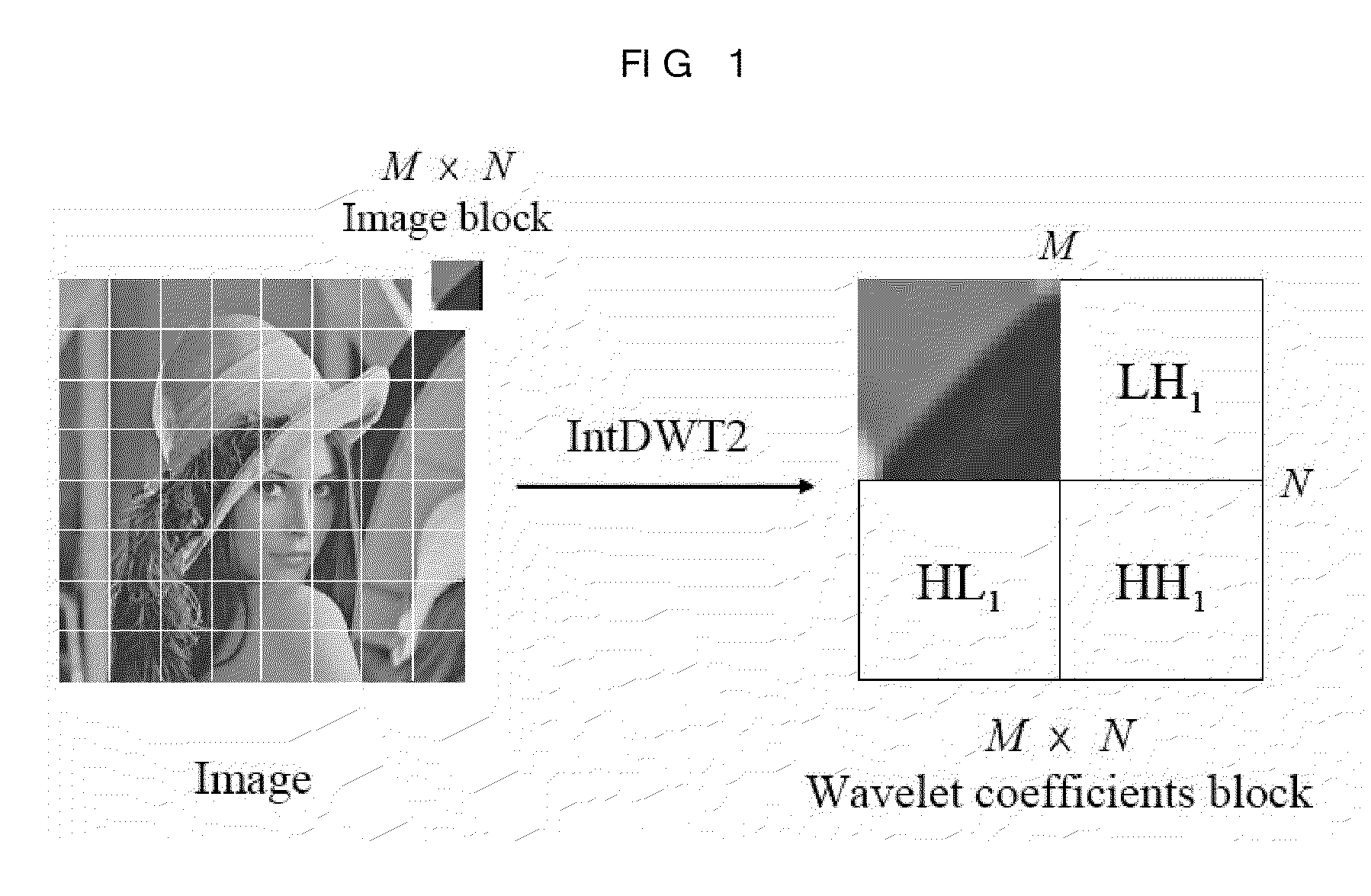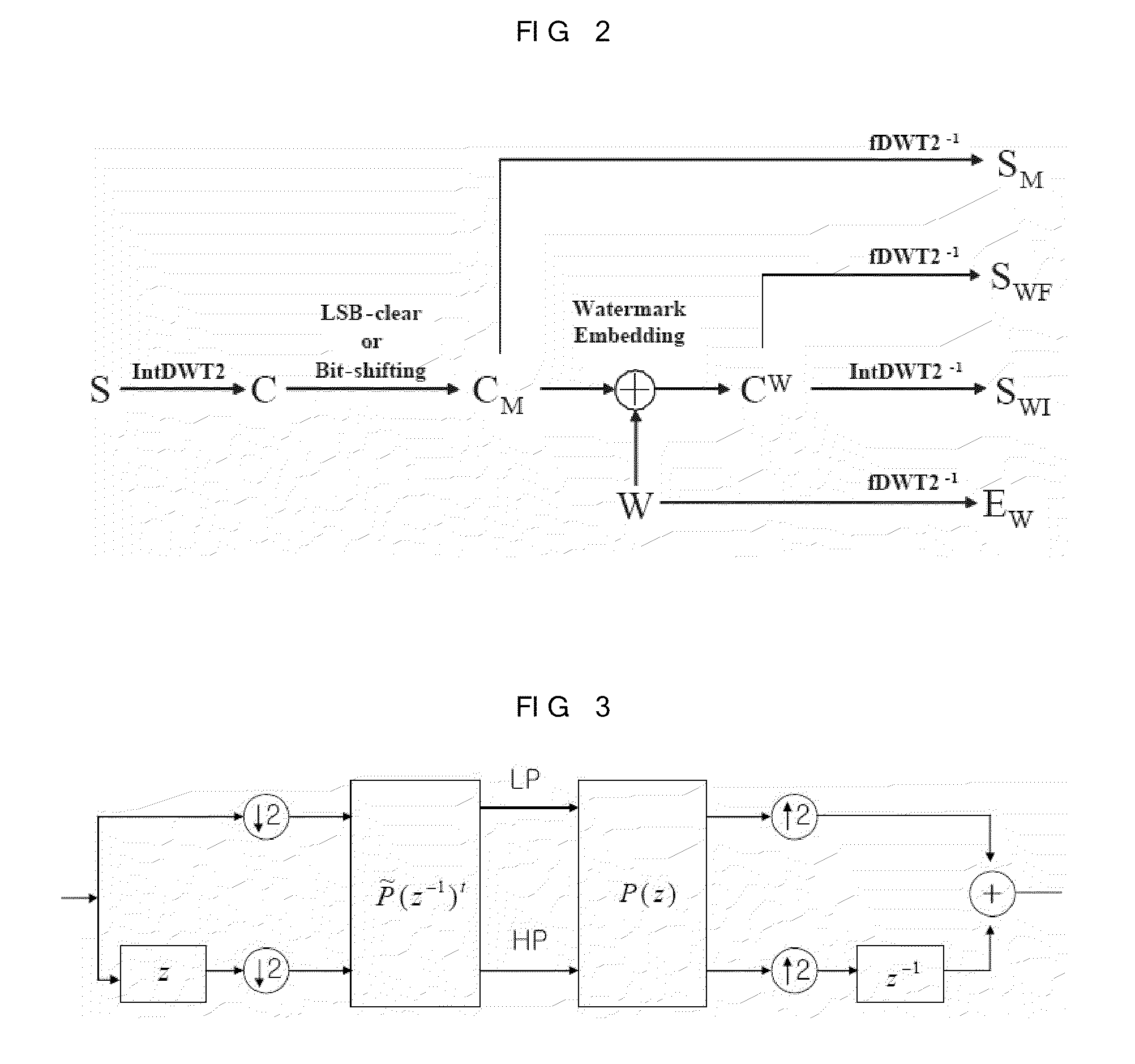Method For Reversible Image Watermarking Based On Integer-to-Integer Wavelet Transform
a transform and integer-to-integer technology, applied in the field of image watermarking, can solve the problems of inability to store both the original and the watermarked versions, the need to remove incurred distortions, and the inability to reverse the degradation of the original data, etc., and achieve the effect of high embedding capacity for digital images
- Summary
- Abstract
- Description
- Claims
- Application Information
AI Technical Summary
Benefits of technology
Problems solved by technology
Method used
Image
Examples
Embodiment Construction
[0063]Hereinafter, a preferred embodiment of the present invention will be described with reference to the accompanying drawings. In the following description and drawings, the same reference numerals are used to designate the same or similar components, and so repetition of the description on the same or similar components will be omitted.
[0064]I. Invertible Integer-To-Integer Wavelet Transforms
[0065]Conventional wavelet transform is not applicable to the reversible watermarking scheme since it does not guarantee the reversibility. For example, suppose that an image block consisting of integer-valued pixels is transformed into a wavelet domain using a floating-point wavelet transform. If the values of the wavelet coefficients are changed during the watermark embedding, the corresponding watermarked image block is no longer guaranteed to have integer values. Any truncation of the floating-point values of the pixels may result in a loss of information and may ultimately lead to the f...
PUM
 Login to View More
Login to View More Abstract
Description
Claims
Application Information
 Login to View More
Login to View More - R&D
- Intellectual Property
- Life Sciences
- Materials
- Tech Scout
- Unparalleled Data Quality
- Higher Quality Content
- 60% Fewer Hallucinations
Browse by: Latest US Patents, China's latest patents, Technical Efficacy Thesaurus, Application Domain, Technology Topic, Popular Technical Reports.
© 2025 PatSnap. All rights reserved.Legal|Privacy policy|Modern Slavery Act Transparency Statement|Sitemap|About US| Contact US: help@patsnap.com



